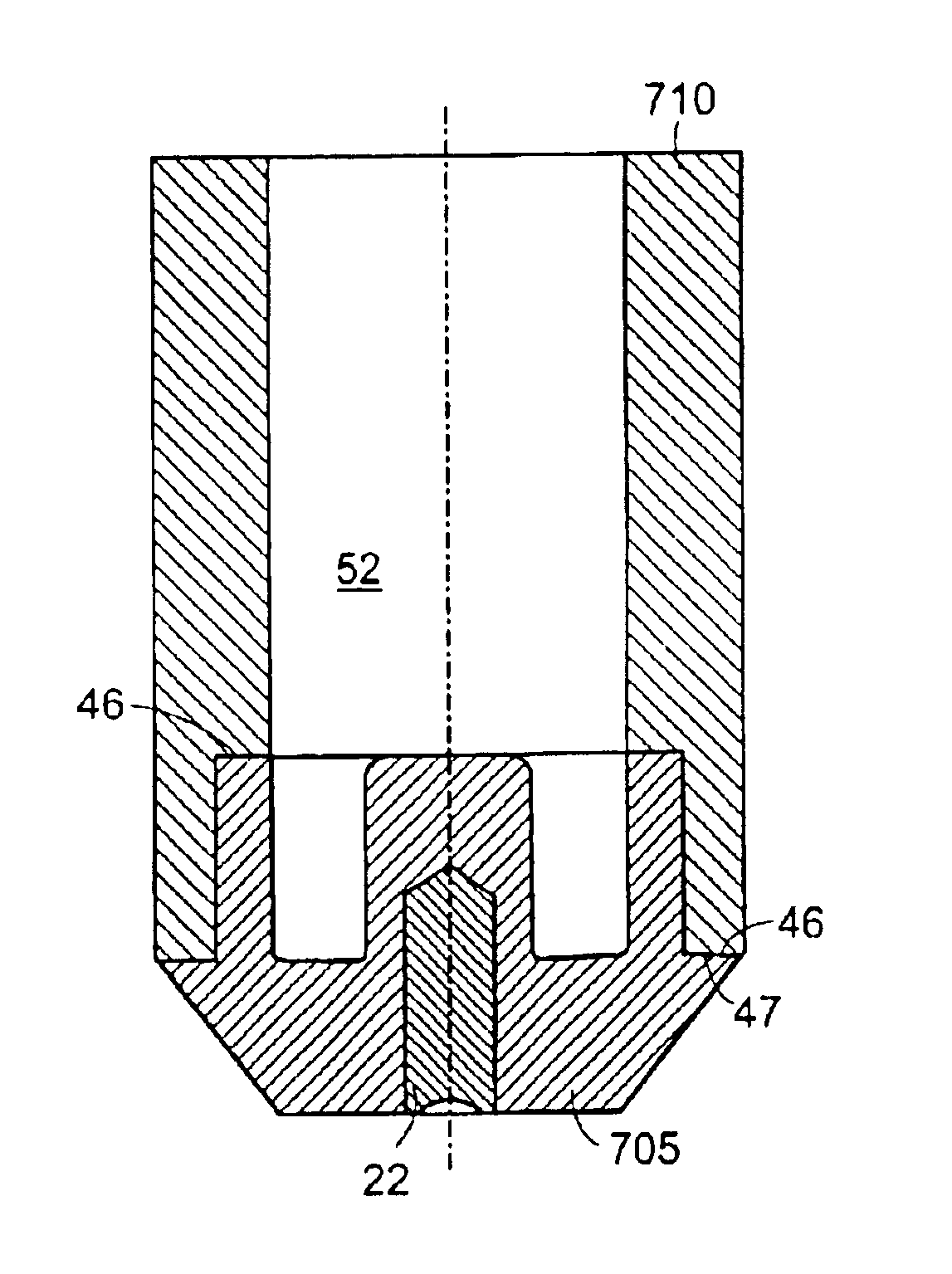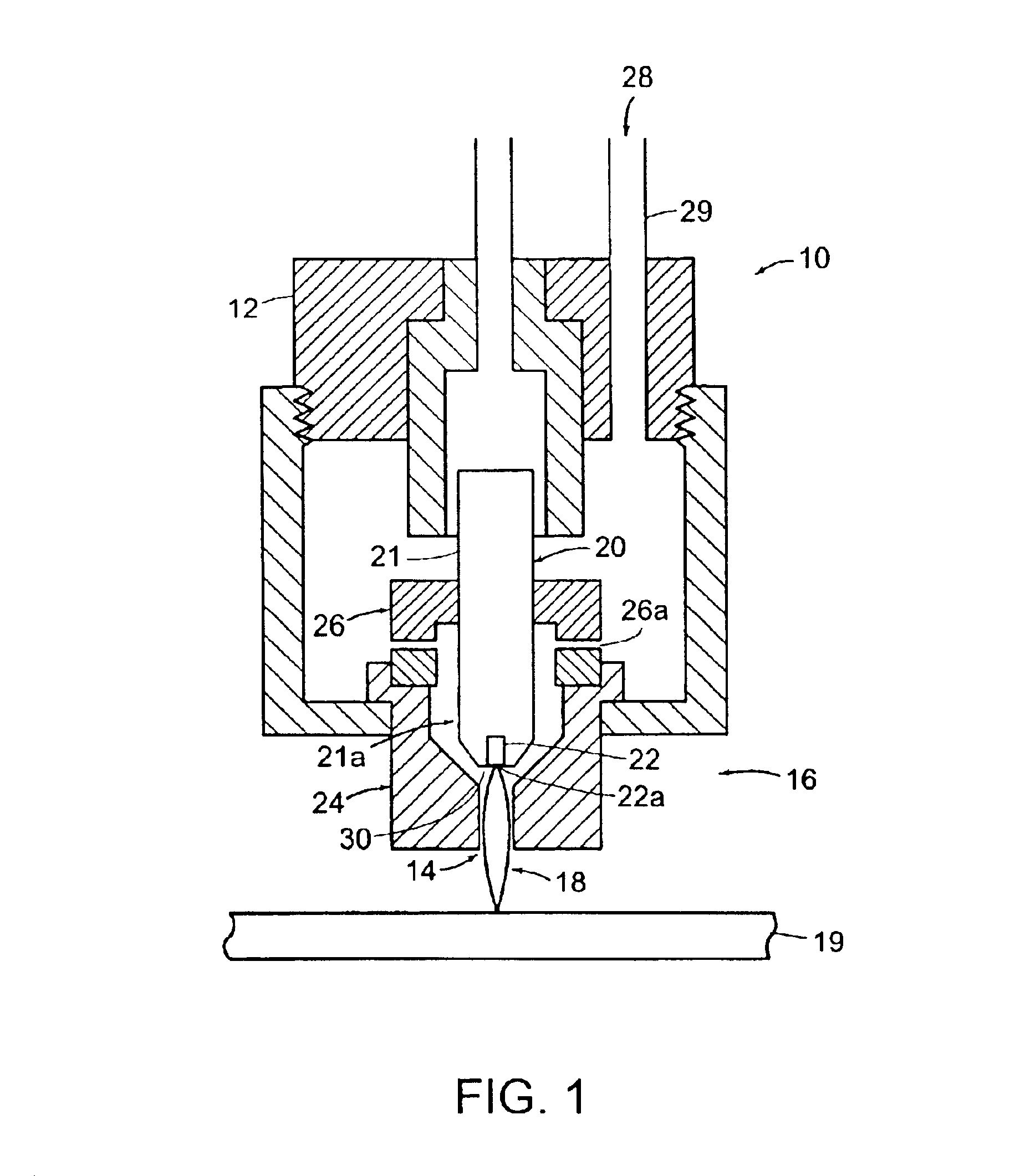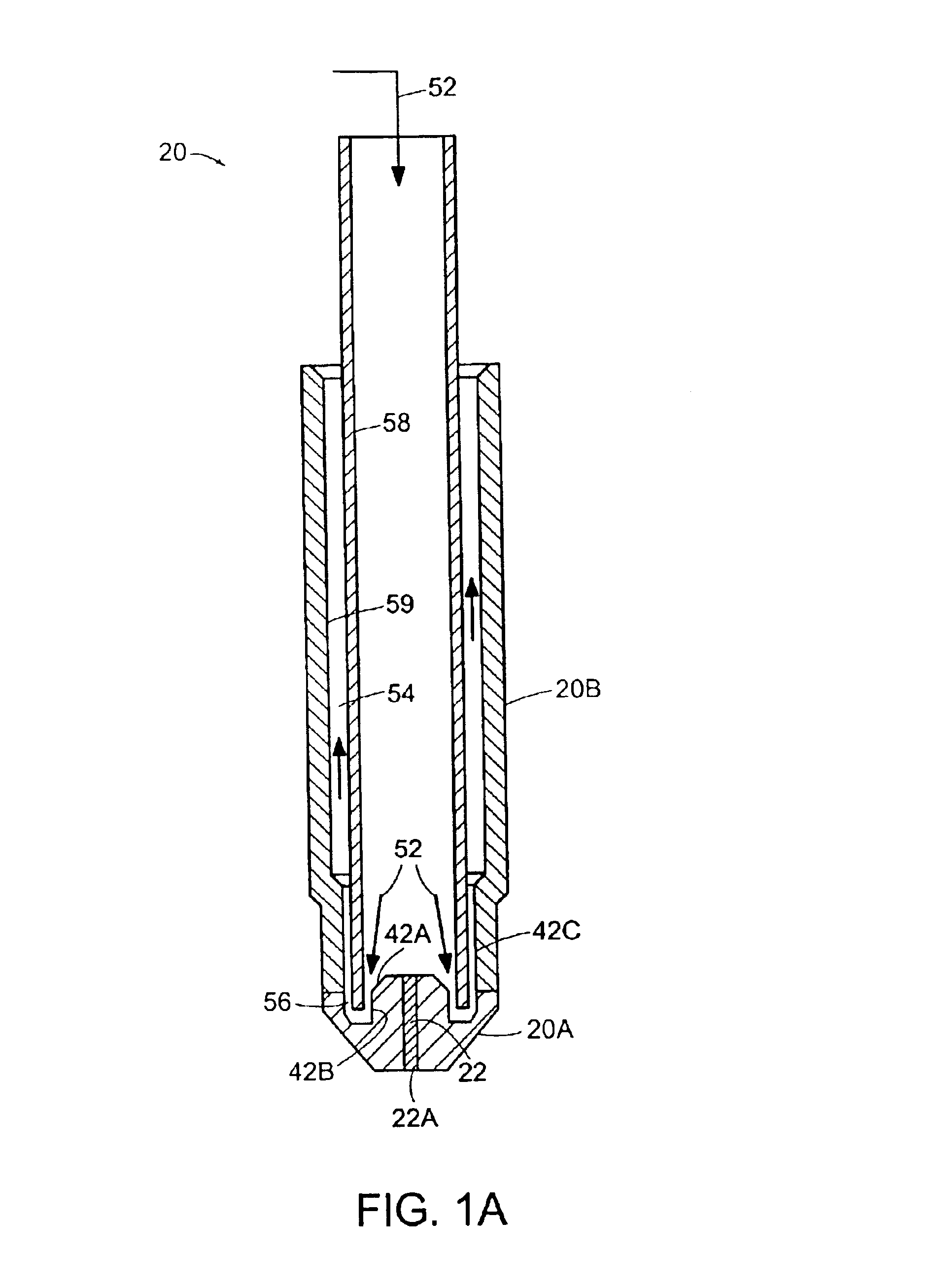Composite electrode for a plasma arc torch
a plasma arc torch and composite electrode technology, which is applied in the direction of non-electric welding apparatus, manufacturing tools, solventing apparatus, etc., can solve the problems of not having superior heat transfer characteristics, high cost, and inconvenient use, and achieves excellent heat transfer material properties, high strength, and maximize cooling
- Summary
- Abstract
- Description
- Claims
- Application Information
AI Technical Summary
Benefits of technology
Problems solved by technology
Method used
Image
Examples
Embodiment Construction
FIG. 1 shows a plasma arc torch 10 embodying the principles of the invention. The torch has a body 12, which is typically cylindrical with an exit orifice 14 at a lower end 16. A plasma arc 18, i.e. an ionized gas jet, passes through the exit orifice and attaches to a workpiece 19 being cut. The torch is designed to pierce, cut, or mark metal, particularly mild steel, or other materials in a transferred arc mode. In cutting mild steel, the torch operates with a reactive gas, such as oxygen or air, as the plasma gas to form the transferred plasma arc 18.
The torch body 12 supports a composite electrode 20 having a generally cylindrical body 21. A hafnium insert 22 is disposed in the lower end 21a of the composite electrode 20 so that a planar emission surface 22a is exposed. The insert 22 can also be made of other materials possessing suitable physical properties, such as corrosion resistance and a high thermionic emissivity. In one embodiment, the insert material has an electron work...
PUM
| Property | Measurement | Unit |
|---|---|---|
| surface area | aaaaa | aaaaa |
| metallic | aaaaa | aaaaa |
| heat transfer property | aaaaa | aaaaa |
Abstract
Description
Claims
Application Information
 Login to View More
Login to View More - R&D
- Intellectual Property
- Life Sciences
- Materials
- Tech Scout
- Unparalleled Data Quality
- Higher Quality Content
- 60% Fewer Hallucinations
Browse by: Latest US Patents, China's latest patents, Technical Efficacy Thesaurus, Application Domain, Technology Topic, Popular Technical Reports.
© 2025 PatSnap. All rights reserved.Legal|Privacy policy|Modern Slavery Act Transparency Statement|Sitemap|About US| Contact US: help@patsnap.com



